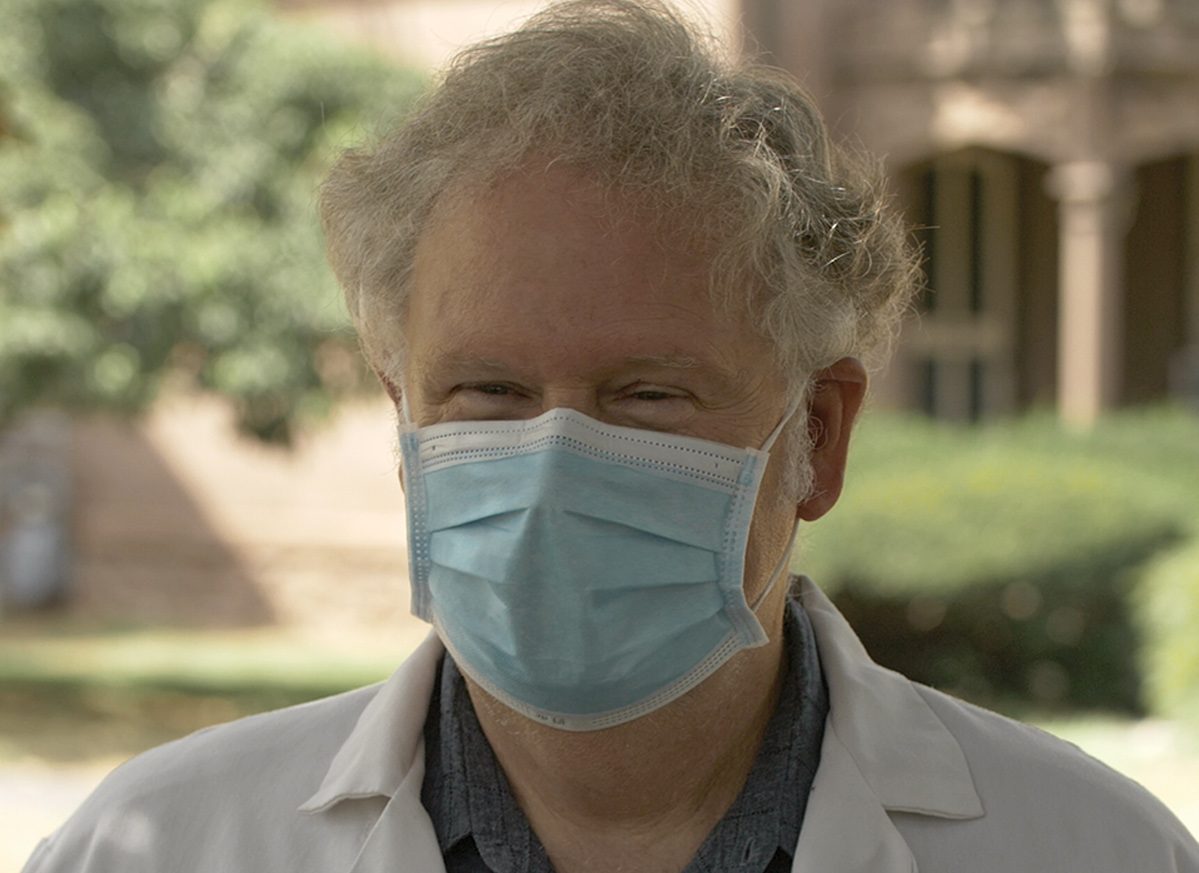Editor’s Note: Learning Curves
I returned to my office in South College recently to pick up a few things, having not been there since the University’s transition to remote working and learning environments last spring. It was like stepping into a time capsule. Here an uncapped pen, there a list of to-dos long since done (or, ahem, abandoned). A large calendar on the wall marking March 2020. My functionally immortal, though very parched jade plant.
What most caught my attention, however, was a picture of my wife and me tacked above my desk. It was from our honeymoon in September of 2019. Our first trip as a married couple. Our first time in Greece. And the last time either of us has traveled more than a few hundred miles (and then only by car) in almost 500 days. But who’s counting.
I think of how lucky we are—to have been able to get married that fall, to have our health, to be working remotely at well-led institutions as the world weathers a torrent of crises. So many do not have such luxuries, especially now. I think, too, of our daughter, born this past August during a fortunate lull in the pandemic’s intensity. I think of her constantly these days. Partially because she is either screaming in my face or giggling in my arms. But also wondering what kind of a world my wife and I have brought her into. At many points of late, it has not felt like a good one.
But then I think back to the doctors and nurses at Hartford Hospital who guided us so expertly through my daughter’s birth, and who daily risk their own well-being for that of others. I think of the estimated 15–26 million Americans who bravely and peacefully gathered to protest racial injustice this summer, and who continue to insist on necessary change in myriad important ways. I think of the people we profile in this issue and the examples they set. And I am heartened.
One of the enduring images for me of Wesleyan’s pandemic response is Dean Mike Whaley in early spring 2020, sitting on the ground outside Usdan with a large group of concerned students and patiently answering their questions about the impending transition to remote learning. Another is the abiding, cheerful face of Dr. Tom McLarney—Wesleyan’s own resident Dr. Fauci—on the University’s frequent Zoom calls, calmly and reassuringly offering the community the latest safety updates. These are instances of the kind of “compassionate solidarity” President Roth refers to in his letter that characterizes good, adaptive leadership.
The last year has made it abundantly clear that it is a matter of when Wesleyan will be thrown learning curves, not if. The same is true for all of us as we move through our lives. How we respond to crises reflects our character. This is what I hope to teach my daughter—how to be kind and reassuring, like Dean Mike and Dr. Tom, especially to those who most need it; how to maintain a great sense of humor under difficult circumstances, as President Roth and Provost Stanton and countless others around Wesleyan have throughout this difficult year; how to be resilient like the jade plant in my window.
So many Wesleyan graduates (Donna Jacobs ’78, Ferdinand Quayson ’20) go on to lead in their areas of expertise, too many for it to be a coincidence. More likely, it has to do with their drive to do good coupled with the examples set for them on campus and throughout the community. In my experience, it’s not just expertise that’s modeled at Wes; it’s the ability to put yourself in someone else’s shoes, empathize with their experience, and find solutions that attend to the common good. That’s what makes Wesleyan’s work essential in many ways. We need compassionate, adaptive, good-humored leaders more than ever. And I’m hopeful that with enough good examples, my daughter will be inspired to be one, too.

